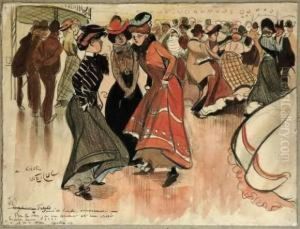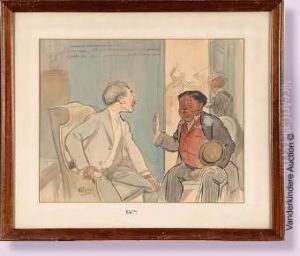Lucien Henri Weil Weiluc Paintings
Lucien Henri Weil, better known by his pseudonym Weiluc, was a prominent French artist born in 1873 in the Alsace region, which at the time of his birth was part of the German Empire due to the Franco-Prussian War (1870-1871). His career spanned several important periods in French art, including the Belle Époque, the interwar period, and the early years of the Second World War. Weiluc was a versatile artist, known primarily for his contributions as a lithographer, caricaturist, and illustrator. His work encapsulates the vibrant cultural and social dynamics of Paris at the turn of the 20th century.
Weiluc's artistic journey began in earnest in Paris, where he immersed himself in the city's burgeoning art scene. The Belle Époque era (1871-1914) was a time of cultural flourishing in France, with Paris at its heart. The period was marked by optimism, peace at home and abroad, technological progress, and the arts' thriving. Within this context, Weiluc honed his craft and developed a distinctive style characterized by sharp wit, keen observation, and a profound understanding of human nature. His caricatures and illustrations often appeared in popular periodicals of the time, capturing the essence of Parisian life and its inhabitants with humor and insight.
Throughout his career, Weiluc engaged with a variety of subjects, from the everyday lives of Parisians to the celebrities and political figures of his time. His ability to distill complex characters and situations into compelling visual narratives won him acclaim and a dedicated following. In addition to his work in periodicals, Weiluc also contributed to the burgeoning field of advertising, where his skills as a lithographer were in high demand. His posters and advertisements are notable for their bold lines, dynamic compositions, and the effective use of color, which made them stand out in the crowded streets of Paris.
Weiluc's impact on French art extends beyond his own creations. He was a mentor and influence to a younger generation of artists, sharing his insights and expertise with those who sought to navigate the rapidly changing artistic landscape of the early 20th century. Despite the challenges posed by the First World War and the interwar years, Weiluc remained a prolific and relevant figure in the art world until his death in 1947. His legacy is preserved in the collections of various museums and galleries, where his works continue to be celebrated for their vibrancy, humor, and keen social commentary.

